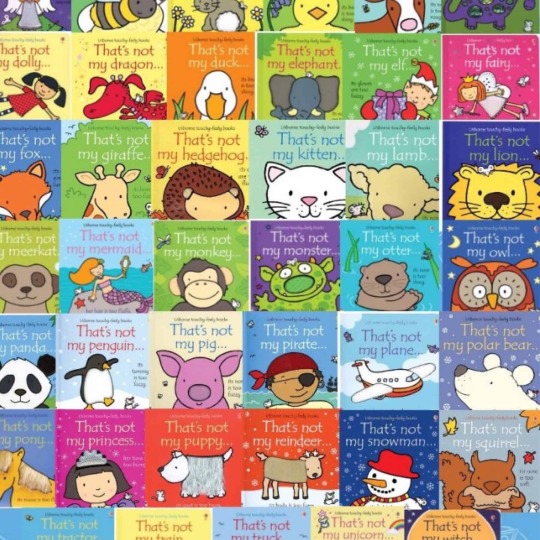#Repetition legitimizes
Explore tagged Tumblr posts
Photo

I love the chaotic energy of this magazine.
Art by Charles Henry Ross, who must have loved this dumb little sketch so much that he printed it three times in the same issue

Ally Sloper’s Summer Number, 1886
#Charles Henry Ross#C. H. Ross#Ally Sloper#Ally Sloper’s Summer Number#1886#the 1880s#illustration#repetition legitimizes#British comics
2K notes
·
View notes
Note
why?
why again and again and again and again and again and again and again and again and again and again and again and again and again and again and again and again and again and again and again and again?
Repetition legitimizes.
1 note
·
View note
Text
fseer funniest behaviors















#kind of embarrassed to admit how many times ive screenshot fseer lines so i can get the cadence down#fseer is so funny. ill say it.#they double down on repetition when they're unsure or concerned. they get very defensive very easily but only rarely get legitimately#angry and when they DO (see: shriek#friendly fire) it never lasts very long#for the MOST part people say mean shit to them and they're just like haha yeah!!#the one I wanted to include but apparently don't have is the one from commsplex in throneside where seer is like#i dreamed an entrance for us and here it is! aren't I nice. say it SAY IT#(sometimes teammates will use the 'thanks' bark. very funny)#but maybe bc i read too much into things it doesn't read as seer threatening their team but more of them fishing for reassurance#which tracks because fseer is so damn scared all the damn time.... as opposed to mseer who seems just the slightest bit more sanguine#and a lot more confident/MEANER?? to his teammates. specifically loose cannon veteran. their dynamic makes me chew glass they're so funny#fseer on the other hand does tease their teammates but it's a lot gentler#sometimes they appear to get stuck on words they're hearing and repeat them a couple of times#ex quibble quibble quibble but then uhhh the one mission with the servitor colony with buzz buzz/chitter chitter#augh.#text post#kenna#<- bc they donated the lines this is more meta about fseer as a whole.#darktide#psyker#fseers writer please ten minutes to talk i need to know everything#also please approximately 500 more lines with the zealots and ogryns#voice lines
49 notes
·
View notes
Note
How did you manage to handle not one, but FOUR separate accounts in fl? I recently made the account for my HD little guy but having to do the tutorial again just seems miserable
there's... weirdly several answers to that question, actually??
a HUGE part of it is due to the way FL is structured. the 10-minute action timer is a core part of the game on a fundamental level, and the fact that i can very easily run out of stuff to do on one character and thus have an excuse to quickly and easily swap to another is just... convenient? satisfying? i'm not entirely sure how to explain it. the fact that i can make progress even while i am fundamentally simultaneously Not Making Progress is like pure dopamine for my freak insane awful little brain. there's just something really pleasing about spending all of my actions pursuing The Goal Of The Day™ on one account before casually swapping to another and doing the same without feeling like i'm wasting time or acting to the first account's explicit detriment. the downtime helps! the recharge time helps! the structure really really works!!
i'm technically only actively playing three, maybe two accounts minimum. the only reason the fourth (the one that'll be my future BaL playthrough) currently exists at all is so i can get his earlygame completely out of the way now and not have to waste time running through it all later, when what i actually want to do is play the ambition i've made myself wait a full year to play. and also getting free goodies as seasonal stuff happens,, something something surprise tools to help us later. the only two accounts i'd say i'm really "actively playing" at the moment are caeru and lark- and of the two, lark takes the most priority, since his ambition is the one i'm currently pursuing in earnest. for a couple months now- despite being My Main FL Character- the scoundrel has actually been pretty inactive on a gameplay front outside of the occasional progression in TLC and discordance content. purely by virtue of having Very little left to do outside of Very long-term grinds and vanities. they're in their "now what?" "now you can start playing the game" era. they've graduated to previous protagonist background cameo in a sequel anime series. they're like the yin FLPC equivalent of red at the top of mount silver. they're Literally just vibing rn. i only keep posting about them regardless because i'm insane and i will never ever ever ever ever let that bat go. but yeah, big TLDR, outside of doing the bare minimum to keep making waves/notability up every week, i'm not actually spending that much time on accounts i'm not currently actively interested in playing. and that accounts for way more gaming spoons than you might think.
i have a virtually lifelong history of playing MMOs, especially and specifically world of warcraft. i was born in the endless grind for useless video game pixel vanities and/or bragging rights. molded by it. you all have merely adapted to doing the same piece of content a pointlessly excessive amount of times for literally no reason besides whimsy and folly. me? i've done my time. i've served my sentence. i've spent weeks doing the original burning crusade netherwing dailies. i've devoted days to running praetorium over and over and over again, back-to-back, nonstop, long before square enix cut it in half and made it NOT take at minimum an hour and a half per run. i've perfected my silverwastes + auric basin goldfarming strategies. i've (almost) crafted dragonwrath tarecgosa's rest. i've killed the sha of anger so many times its dying scream of agony is embedded into the very fabric of my being. ""only"" doing making your name content four times over? that is nothing to me. it means nothing to me. it is so infinitesimal i can do the persuasive seduction quests in my sleep. it's not a matter of handling misery, or having the capacity, or even sighing as i remember the brass embassy raid segment of the watchful questline seriously i don't know why i keep forgetting that exists or what even is my problem with it i just am so consistently mildly inconvenienced by it and its highly specific resource requirements and it is the worst thing ever. maybe i'm just so used to the scoundrel's near-infinite money and troves of disposable items that i've completely forgotten what being poor is like. despite having done that step 3 fucking times now. ahem. anyway. i have transcended the feeble mortal bindings of my resistant-to-grinding flesh and ascended to a higher plane of enlightenment, they may call me insane but they will be the ones left laughing when they see what that "insanity" has wrought, i've usurped them, i've usurped them all-
hacks and coughs and awkwardly clears my throat. i mean. uh. um. Ahem.
the empress' court artistry + tales of the university nerfs helped too.
#and yes#before you ask#i have forgotten which account has which items/has done which content many a time#i think the most painful incident was forgetting to keep up the scoundrel's making waves while i was still playing nemesis with caeru#given that im trying to build it up to 12 and reset their specialization... that was uniquely painful#then again they have like 40 BDR so it wasnt actually that inconveniencing lmao#fallen london#ask#long post#sorry for the infodump + sudden villain monologue.#all jokes and personal accounts aside i totally get the apprehension abt doing that stuff again#it's not for everyone. not by a long shot.#im only doing this because im genuinely invested and in love with this silly little browser game#and way back when i started i made a (only half metaphorical) solemn oath to experience all of its ''main stories''#and truly see everything it has to offer#(bc i like. physically cant do hyperfixations by halves. i need to consume Everything abt the thing or i'll explode)#(and even then i'll probably explode anyway. it's either completely drop it or go All In until it stops taking up so much space in my brain#(and. given the track record. that is not happening with FL for a while yet)#but like. that isnt actually normal behavior. just. just to clarify.#from what ive seen a VAST majority of people do not go out of their way to play literally every ambition#and that is so valid. it is so overwhelming. you have to juggle so much.#you have to play the earlygame So Many Goddamn Times.#(as i said. served my time. did my sentence. i am my scars. etc etc)#the best advice i can give as someone who's so completely desensitized to that repetition it doesnt even phase me anymore?#the same advice i can stress to all FL players. legitimately just take ur time with it. play when you want to.#dont when you dont.#sometimes you have to grit your teeth and bear things. and when it comes to alts you Will have to grit your teeth and bear it all again#but the beauty of this being a game that one plays for fun is that unlike. say. crushing deadlines or annoying coworkers in real life#you are completely within your power to decide when where and if you want to grit and bear it all#..wow this is ADVANCED yin rambling holy shit. i actually reached the tag limit. i think this ask should be put on some kind of list
18 notes
·
View notes
Text
somebody rec me some good books. and they do actually have to be good. don’t rec me something just because it’s gay or it’s popular, it has to also still be good. like both the story and the writing have to be good none of this good concept bad writing or good writing horrible story. fantasy or soft scifi preferred, especially if it’s nontraditional fantasy. I am bored and sick of the internet and I want to get back into reading more but I’m kinda meh about most of what’s on my shelf
*edit: when I say “soft scifi” I don’t mean cozy I mean not hard scifi, as in stories that are more fantastical than grounded in hard science. for example the Martian is considered hard scifi, so not that. Star Wars would be closer to a soft scifi bc it’s all bullshit on the science end and it’s more about the vibes
#I started the jasmine throne and that was good but then I noticed a somewhat repetitive quirk of the writing style#and once I noticed it I couldn’t STOP noticing it which was extremely distracting and made it hard to pay attention to the story#the problem with books is I am sooooo hypercritical and so many ppl are bad writers and get published anyway#and booktok can’t tell the difference so these shitty books become bestsellers just bc they’re gay and tropey#not that jasmine throne is bad writing. it’s ok writing I just can’t stop noticing they overuse one particular sentence structure#and now it’s driving me crazy#but there are plenty of other bestselling books that ARE legitimately bad writing#I’m reading a psalm for the wild built rn and that is genuinely really good and next is the second book#but I’m almost done with the first one and both are like. really short. so I need something for when I finish those#(carefully does not look at the stack of comics I bought at SPX that I haven’t read yet)
84 notes
·
View notes
Text
The pokemon anime subreddit fascinates and frustrates me on equally deep levels
#smiling and blinking innocently. long tags ahead :) being normal :)🌸☀️☘️✌️💐#i'm such a 'minding my own business' person in fandom. i feel like my usual reaction to seeing takes I disagree with is#'well. people probably hate some of my takes so whatever'. perhaps even the ones i'm about to share#but. man.#it's like a portal to 2010 forum discourse but goh and serena are there this time.#deeply fascinated by the repetition of old ship wars too????#what do you mean we're still having legitimate 'but drew and gary are mean' discourse 😭#i mean by all means they should keep arguing because mostly i'm just glad that the wider pokeani sphere remembers drew at all#but that being said i wonder what kind of rivalry these people would have wanted instead?????#because there's other rivalries we could point to where they weren't air-quotes 'mean'. but we have those and people ignore them lol#because they're-imo- usually less engaging and dynamic. except for dawn and zoey who have never done anything wrong in their lives.#like we COULD give everyone the supportive happy rival experience a la may and grace or whatever but that's just not the SAME#and augh. taking psychic damage and trying to be normal but that's the THINGGGGGGGGGGGGGGGGG OKAY#are Gary and Drew needlessly mean in early episodes? yeah lmao. i'm not arguing on that. they suck ❤️ completely insufferable.#b u t#there's that line. right. the line where it slowly slides into backhanded compliments too and giving that motivation-#-for their rival to work harder and the fact that they want that reaction and attention from this one person so badly.#like shipping aside I really do think that the friction of the Gary/Ash and May/Drew rivalries is what made them GOOD.#and yeah sometimes it was out of line but also that's just how the dub is as a whole tbh. they just said whatever shit they could 😭#AND BACK TO THE BEING NICE THING. Ash and May both got growth from their nice rivalries but not what they got from Gary/Drew.#it's different types of growth and lessons and they needed both kinds from different sources. I'd argue the rougher rivalries taught more?#regardless of your opinions on the characters themselves you can't deny that Gary/Paul/Drew/Harley/etc- the rivals that pushed A&M-#had the biggest impact on their growth over the rivals that didn't push. note that 'friends' and 'rivals' are different categories for this#I'm pitting. like. gary and paul against morrison and ritchie and not against dawn or pikachu or brock or whatever. different convo.#but it was growth out of spite to be better than the jackass rival at first and then that CHANGED INTO MUTUAL BETTERMENT#AND WANTING TO BE BETTER ✨FOR✨ AND ✨WITH✨ THEIR RIVAL. OKAY. (re: gary and drew specifically)#and as a result of all of this. drew and gary did get better to be fair!#well gary did kind of just start picking on goh instead gjkhsdkfj (joking) but ykwim.#DAMN IT I'M OUT OF ROOM AND IT DELETED A WHOLE ASS PART 2 THAT I HAD TYPED OUT#fine. i'll make this its own post at some point because i yearn to yap on about it
15 notes
·
View notes
Text
repetition legitimizes
repetition legitimizes.
55 notes
·
View notes
Text
Me about 30 minutes ago: I'm totally not too tired to work on my complicated knitting project. I'm definitely familiar enough with the pattern at this point that I don't have to pay too close of attention to what's written, I can absolutely figure it out.
😭😭
#made a BAD mistake multiple times across this one row. like super obvious and visible no matter what#and it messed up the stitch count massively so fixing just those spots will lead to major tension issues#and it's on a row that is REALLY hard to undo due to all the twists and cabling#normally knitting soothes my mental breakdowns. rare (but not entirely unheard of) for it to cause them#😭😭😭😭#legitimately taking everything in me to not just unravel 8 months of work in distress#gentle repetitive motion so good for helping to keep me from catastrophizing until it becomes the catastrophe
4 notes
·
View notes
Text
Hey gang! We've covered quite a few Secret Rings tracks, but very surprised that this one hadn't been covered. So, let's go!
This one hits the ground running, crunchy and bombastic. Here, take my hand, because you need to focus through the...lyrical complexity that this song brings to the table. I know I need to. I can imagine this was very fun to record, at any rate!
The drums are really the star of this show. With hand drums and a full kit that stays busy, it really stands front and center. The bass line supports in a simple way, and while the guitar gets a simple melodic solo in the B section, it's all about the beat and the rhythm. There's even a separate drum break where the drums are mixed even further front and center! All with that mid 00's edge and coolness rolled in. What else can I say? Too funky? Dinos? It's a jungle? The wicked wild?
#the wicked wild#sonic and the secret rings#satsr#sonic the hedgehog#sonic#music#SOPRRY i had to listen to this a few times in a 'repetition legitimizes' sort of way so i wouldn't stop LAUGHING at this one#shout out to all you wicked wild fans out there. this is for YOU
8 notes
·
View notes
Photo



I decided to give a go to @niennanir’s lovely print-your-own-fic recipe on my Inside and Out as a test run and I’m quite pleased with the results as a first pass :D
I wish I’d taken a few more process pictures but there was a slight lull as I had to go shopping for 12x12 cardstock lol, but! I do have a couple closeups/extras that I added for funsies :D

I went with freehanding the title and I think in the future I would opt to not do that lol, at least not without a printed template. That said, both LibreOffice and SAI refuse to recognize my SCII fonts >:0 If you notice on the first page, I used the Ace Attorney font in italic haha, it’s an okay alternative even if it’s not what I actually want |0 I am happy with the gold detailing tho :3c

I did have an unconscionable amount of fun freehanding the ship caption tho ahh <3 <3 Immediate happy stims upon completion, their names together look so pretty ♥ Credit to Zarla’s original minicomic on that one :3

I also managed to get the last sentence of the fic isolated on the last page thanks to the formatting haha ♪

I was also able to add a bookmark! Ma happened to have a couple very thin ribbons to choose from and red ended up complementing the green very prettily!

It reminds me of VUX tongues hehehehe ❤️💕💖💞
#What do I tag this lol#SCII#I am continually and incurably in love with papercrafts <3#Hard to believe it's been since Pokemon Homestyle since I've given anything a go! These darn talented artists inspiring me! Lol#Honestly tho I would absolutely recommend this project :D The prep work is manageable and friendly and the action itself is enjoyable#Depending on how much you enjoy repetitive motions haha ♪ Folding and creasing the pages was very relaxing to me :)#I went for my own fic as a first run since y'know - I have very direct access to it lol#Plus it'd be less sad if I messed something up - I want to do right by my favourites from other artists! I'm allowed to make my own mess lol#Also finally convinced me to return to the loving embrace of LibreOffice after like a decade away lol#I just never had a reason to redownload it! Wordpad does exactly what I want 95% of the time!#But it couldn't do columns so okayyyyy fiiiiine I'll get it again (lol) I do rather like it :)#There's still some things I'd change! I'm sure you can see from the pages where you can see both edges that the layout's a bit uhmmmm#Skewed? Corner-heavy? Lol just a matter of changing the borders :) LibreOffice's measurements are wack tho :P#But I fully intend to do this again! :D Print a few test sheets first >:3c Legitimately looking forward to it!#Probably gonna do another one of mine next before I give a go to someone else's I'd like to keep#I have ideas for how to improve! And better and more plentiful supplies! It makes me want to make! :D#Oh yeah and being in the book-making mood reminded me of one of the Vargas-as-a-psuedo-bible ideas I had but didn't put anywhere lol#If I may posit for your consideration: Before as the Old Testament and After as the New Testament :3c#I'd Absolutely buy two versions - And a full version for the record lol I would easily own multiple copies of physical!Vargas lol#Fun thought to me hehehehe ♪♫
12 notes
·
View notes
Note
Best thing about being in a fandom and worst thing?
Best thing is probably the community and ideas that can bounce all over the place for new inspiration. Everyone gives and takes and adds to the conversation. I've been inspired and encouraged so much to create and do things I never thought I'd do in this fandom. I genuinely thought my only fic in the fandom would be "Mischief and Foresight" and now I have like 10 fics in it which is crazy to me. I had never made oneshots and I was completely inspired to make those because of funny ideas on Twitter or Discord. People can also open my mind to ideas- I can be so walled off from things and have an instant reaction of "No." but just hearing an idea out can potentially make me see the appeal. Kind of nice to have new ideas open up there when I would have been closed off before
Worst thing is that conversations can go in directions I don't like 😠😤 Like can you imagine people having different ideas and thoughts from your own? Unbelievable 🙄 Kidding kidding... mostly
No, but for real, the worst thing in fandom,, hmm, I haven't really encountered anything I'd consider to be terrible. I've been very fortunate to mainly encounter kind and welcoming people. Worst thing so far might just be misunderstandings or little annoying stuff that might go down
#oh shit I haven't worked on that for forever idk when that's coming out but you asking inspires me to work#on it now so that there can be some progress on that fic#An example here would be if someone asks when a new chapter will come out for a fic and someone else comes to say it's entitled to ask#I don't really feel like it's entitled to ask#I don't feel like it's that pressuring#I feel like it's most likely a legitimate and curious question and no one should feel guilty about asking#I'll just try to be honest like so it's not a big deal#back to when concepts and topics go in directions I don't care for#I just tend to slip away and that's that#it's not that big of a deal either especially since I do know I am a very picky bitch so it really is a coin toss to if I like something#Maybe another bad thing about being in a fandom is the need to always be smart funny and creative#Hard to keep up you know#My ideas just start to circle and get repetitive which I'm sure gets a little... tedious to my friends#Oooh! Or the constant feeling of needing to create to stay relevant#that's tough and it can happen even if you post something but you do it too slow so no one's looking at it#I guess being in a community sometimes feels like a fight to feel wanted#that got dramatic#my bad lol listen ignore me I'm dramatic and it's probably because I need breakfast 😂#sunny's answers
4 notes
·
View notes
Text

WHAT DAY IS IT
Month 8 day 5, supposedly. Idk, it's after midnight, I'm am the sleepy tireds, and I arted so hard tonight my iPad died :D Just the battery, my baby is charging now, but still. 0% battery in the middle of me erasing a line. Very rude.
Anyway, I tried to get Cuff looking more like his beautiful canonical self (with exactly zero reference because there's something wrong with me). Also cleaned up the colors on Frey so they actually filled in the lines and didn't bleed over, not to mention getting her to look more canonical, too.
Unfortunately (fortunately?) because I'm redoing the colors to be tighter and cleaner, and also redrew Cuff and the hand he's on, I'm gonna need to redo ALL of the shading. All of it. ohgodhelp
#the great artscapade of 2023#art#my art#forspoken#forspoken fan art#frey holland#forspoken cuff#athia#avoalet#what cloak was I giving her again I forgor#my brain is mush#I blame the sleepy tireds#I'm so glad I have eighty five bajillion and change projects going on at one time now because any time#like legitimately#I needed to do something that required concentration but wasn't the repetitive soothing concentration of lighting Sus's birbs#so cleaning this up was just what the brain doctor ordered :D#I WILL light the Sus birbs#that is going to be a thing I will be doing#pinky promise#just not tonight tonight I needed something different and I had it so yay :)
4 notes
·
View notes
Text
Re4 gave me motion sickness 0/10 game
#jk I love re4#but that camera does give me motion sickness#played for ??? 4+ hours today (?)#(spoiler for 2005 re4 BUT) I’m at the part where Saddler takes control of Ashley and HGGGG in getting sick and tired of having to rescue he#over and over again#I mean. that’s what keeps the game going but#at the same timeee#gets exhausting#but I really really love how this game knows how to keep things fresh#great puzzles. challenging bosses. a fresh batch of enemies every so often#and there are some things that are legitimately frightening and stressful!! like the regenerators are spooky#those stress me tf out#they eat dog food <3#I’m also super super into those parts where Leon and/or Ashley have to jump on a vehicle and fight off enemies for an extended period#the game keeps it from being repetitive most of the time#I have so many thoughts about this game I LOVE IT SO MUCHHHH#Leon is actually a really enjoyable protagonist (unlike Ethan)#mans is so annoying unlike my wife Leon
1 note
·
View note
Photo

Repetition legitimizes.
*Check previous post to see the source idea and single element of this work: A little line.
2K notes
·
View notes
Note
Honestly thought I'd never hear the word "usborne" again. My mom used to live and breathe that company, and while I certainly don't regret a fair chunk, I do find it amusing as I look back now. I legitimately thought it had fallen off faster than Juice+.
In reference to a post where i mention my kid has the usborne “see inside germs” book.
So if people don’t know, usborne is a weird publishing company that has done indispensable books for British children for generations; they’re in every library, school and nursery, and have shelves devoted to them in every bookstore. They are how many people learned to read, and are the originators of many hyper focuses. They’re famed for doing educational lift the flap books for all ages, like “see inside your body”, as well as as the ubiquitous touch-and-feel series, “that’s not my….” In which a mouse comments improbably on various creatures not being their creature. “That’s not my dragon,” the mouse says, inviting you to stroke a dragon with a patch of fur on it, “its tummy is too soft. That’s not my dragon,” on the next page, where the dragon’s ears are lined with textured paper, “its ears are too bumpy.” This seems like such an inefficient way to find one’s missing dragon, a fact that simmers underneath you through endless repetition. Why does the mouse own so many things (pirates, ducks, polar bears) and why is it interrogating other people’s pirates etc by feeling their legs.


At any rate, turn a parents’ house upside down and these books fall out.
Which is why it’s completely hilarious that they are also an MLM.
Well. Kind of. In the old school sense. It’s less about signing up a pyramid scheme and more about getting a random citizen to buy a crate of perfectly popular books and try to sell them on from their home. It’s very traditional for Mums On Maternity Leave to do this. Pre-social media and online ordering, they’d hook up other mums at toddler group. Today, they post awkwardly on social media. The idea is that buying from another parent is cheaper than the bookstore, and they get to keep the markup. They get intense about things, and I believe they attend conferences. Nobody makes a huge amount of money and it’s unclear how undercutting local bookstores is helpful; it’s also basically the same RRP as Amazon I think.
And the books are perfectly respectable and sell perfectly well in bookstores.
So. Like. This marketing scheme is completely weird. Why?? Why does it still exist? People buy the books normally! You don’t need to promote them aggressively! You don’t need elaborate independent local middlemen schemes! You can just buy them! I have never understood this. I just file it under one of those weird mat leave hustles.
But don’t worry OP. They’re still going. They’ll never stop. The thing is that your mom got bored and online sales probably ate whatever residual profit margins were left and it’s probably very liberating for everyone to grow out of the “that’s not my cow” stage, but Usborne books are going strong.
1K notes
·
View notes
Text
I have a post-sotr head cannon that Effie Trinket secretly loves cleaning and hates that it’s considered lower than her station to do it. I think she finds mindfulness in it- the repetitive scrubbing motion, the sharp smell of the cleaning chemicals, the burn of the just-a-touch too hot water on her hands. I also think the first time Haymitch is legitimately charmed by her (not just pleasantly surprised by her lack of bloodlust) is just after their first tribute dies that very first year. Haymitch and Effie see it together in their viewing room, and he storms out without so much as looking at her and gets off his face somewhere out of her sight. He comes back to the apartment trash wasted and barely able to move, collapsing on his back on the couch. Effie had gone to bed a while ago and is drawn out by the commotion, annoyed at being woken after she cried herself to sleep. When she sees him she manhandles him onto his side so he doesn’t choke on his own vomit and thinks he is entirely passed out- but he isn’t. From his position on the couch, he watches Effie through hazy, drunken eyes as she gathers all the silverware in the apartment along with a large, steaming bowl of water and a soft cloth and proceeds to polish all of it until it gleams. Haymitch isn’t sure if it’s the booze or reality but she looks almost… soft sat at the dining room table, wearing an unadorned silk slip, her hair mused up and falling out of a plait, her feet bare and tapping gently on the thick carpet, her face only illuminated by the city lights streaming through the windows. He can see so clearly the human under the Capitol mask. The next morning he sees one of the avoxes being praised for the polish on the silver, and he sees Effie not say a single word to correct the attendant doing the praising. Their second tribute is dead before they go to bed that night, and when he finally drags himself out of bed the following day, he notices the windows are so clean they almost look non-existent. He starts to notice that her nail beds suffer when she’s stressed. He comes to associate the smell of bleach with the hollow, empty feeling of another kid dying.
#you’re gonna look at Effie trinket and tell me you can’t imagine her absolutely going to town with some bleach and a grout brush#you’re gonna look at me and tell me that i’m wrong?#the hunger games#thg series#thg sotr#thg#haymitch abernathy#effie trinket#assume hayffie#hayffie#i’m tagging hayffie because hayffie is in the background of everything with effie and or haymitch in
244 notes
·
View notes